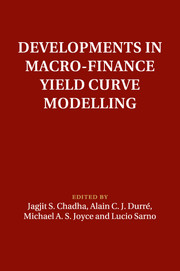Book contents
- Frontmatter
- Contents
- List of figures
- List of tables
- List of contributors
- Foreword
- Preface
- 1 Editors' introductory chapter and overview
- Part I Keynote addresses
- Part II New techniques
- Part III Policy
- 11 The repo and federal funds markets before, during, and emerging from the financial crisis
- 12 Taylor rule uncertainty: believe it or not
- Part IV Estimating inflation risk
- Part V Default risk
- Index
11 - The repo and federal funds markets before, during, and emerging from the financial crisis
from Part III - Policy
Published online by Cambridge University Press: 05 February 2014
- Frontmatter
- Contents
- List of figures
- List of tables
- List of contributors
- Foreword
- Preface
- 1 Editors' introductory chapter and overview
- Part I Keynote addresses
- Part II New techniques
- Part III Policy
- 11 The repo and federal funds markets before, during, and emerging from the financial crisis
- 12 Taylor rule uncertainty: believe it or not
- Part IV Estimating inflation risk
- Part V Default risk
- Index
Summary
11.1 Introduction
This chapter examines the link between US overnight money markets, before, during, and emerging from the financial crisis that began in August 2007. In particular, the chapter focuses on the transmission of the monetary policy stance from the overnight federal funds market to the overnight US Treasury general collateral (GC) repurchase agreement (repo) market. In addition, the chapter estimates the liquidity effects in these two money markets over time, with an eye to gauging potential upward pressure on the two money market interest rates from hypothetical liquidity draining by the Federal Reserve.
To the best of our knowledge, there has been little recent work done using relatively modern econometric techniques which evaluates linkages between money markets. Much of the monetary policy transmission literature examines lower-frequency changes in interest rates, and then traces these changes through to real output and the rest of the economy. Often assumed to work seamlessly is the first step in this transmission – the transmission of the monetary policy stance from the federal funds market to other money markets. And as the recent financial crisis has demonstrated, seemingly resilient linkages between financial markets may suddenly weaken or disappear.
Given that these markets are the first markets in the monetary policy transmission chain, the focus on the money markets and their functioning during and emerging from the financial crisis is easily justifiable.
- Type
- Chapter
- Information
- Developments in Macro-Finance Yield Curve Modelling , pp. 293 - 325Publisher: Cambridge University PressPrint publication year: 2014
- 3
- Cited by



